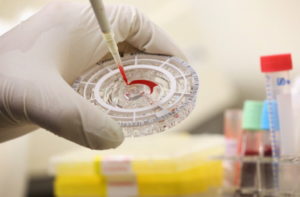
H58 emerged in South Asia about 30 years ago and has slowly grown to become one of the predominant forms of the bacteria Salmonella enterica serovar Typhi (S. Typhi), which is commonly known as typhoid fever. It spread to Southeast Asia, Western Asia, East Africa and Fiji. Southern Africa has also been affected.
This research is one of the most comprehensive sets of genetic data on a human infectious agent, and the data show a global health threat. The findings were published online Monday in the journal Nature Genetics.
The genomes of 1,832 samples of S. Typhi bacteria were sequenced and collected from 63 countries between 1992 and 2013. About 47 percent were from the H58 strain. This strain is resistant to all commonly known antibiotics that would be used to initially treat this disease.
Researchers sound an alarm when they estimate about a third of the world’s population is in danger of becoming infected. There are vaccines available, but they are not readily available in every part of the globe.
Currently, this strain is endemic to places where health workers lack vaccines but commonly use antibiotics, even as a preventative measure, which may be spurring some resistance.
Typhoid fever is caused by consuming food or drinks contaminated with the feces or urine of people who are infected. Many places that have typhoid are underdeveloped countries with poor sanitation and little access to clean water.
In the United States, over 5,000 cases each year appear from mostly travelers who became infected abroad.
S.C. Rhyne is a blogger and novelist in New York City. Follow the author on Twitter @ReporterandGirl, http://Facebook.com/TheReporterandTheGirl and visit her website at
http://www.TheReporterandTheGirl.com


